Facial Fat Transfer Seattle, WA


Evidence-Led Elegance
You can point to the spots that changed first: a deeper tear trough, cheeks that lost volume, lips that look thin by evening. Makeup helps until it settles into fine lines. Filler helped for a time, then the upkeep felt constant. Facial fat transfer offers another path. By moving your own fat cells from a donor area to key areas of the face, it restores shape with tissue that looks and feels like you.






At Said Plastic Surgery in Seattle, Hakim Said, MD, FACS performs facial fat grafting with a steady, detail-minded approach. He is an ABPS board-certified plastic surgeon, a longtime University of Washington faculty member, and a planner by nature. The work begins with proportion: where lost volume shows first, how light falls across the midface, and which areas need lift versus blend. The goal is personalized results that hold up in motion and on camera, not just under exam lights.
Restore Contour
At Said Plastic Surgery in Seattle, Hakim Said, MD, FACS performs facial fat grafting with a steady, detail-minded approach. He is an ABPS board-certified plastic surgeon, a longtime University of Washington faculty member, and a planner by nature. The work begins with proportion: where lost volume shows first, how light falls across the midface, and which areas need lift versus blend. The goal is personalized Facial Fat Transfer results that hold up in motion and on camera, not just under exam lights.
Volume That Feels Like You
Facial aging is a mix of fat loss, bone shift, and skin change. Fillers can soften that, yet they sit in a single layer and require repeat visits. A fat transfer procedure relocates a small amount of your own facial fat (harvested from the abdomen, thighs, or another donor site) and places it in strategic areas such as the cheeks, tear trough, lips, chin, and the frame around the mouth. The injected fat survives by reestablishing a blood supply. The portion that takes can stay for years. Many Seattle Facial Fat Transfer patients also notice calmer skin texture over time, a change linked by researchers to growth factors and stem cells present within the graft.
Quiet Volume, Real Movement
Good Facial Fat Transfer candidates are adults with clear signs of aging from facial volume loss: hollow under-eyes, flat upper cheeks, thin lips, and a drawn look that suggests a tired appearance even after sleep. Stable health and a steady weight help the graft succeed. During your consult, Dr. Said reviews your medical history, current medications, and prior surgical procedures or dermal fillers. If loose skin is the main issue, he may recommend other procedures such as a facelift or neck lift, with fat grafting added for finish and contour.
Planning focuses on proportion and supply. You and Seattle Facial Fat Transfer provider, Dr. Said decide how much fat needs to be moved and which areas of the body provide the smoothest harvest. The donor area is usually the abdomen or thighs. A photo review helps define goals for each zone: lift at the cheek, soft fill in the trough, a quiet rim at the lip border. The plan also covers anesthesia. Most patients do well with local anesthesia and IV sedation. General anesthesia is reserved for extensive work or cases combined with other surgical procedures.
Clear Steps
The procedure has three parts. First is liposuction through tiny ports at the donor site using a fine cannula and tumescent solution for comfort and control. The harvest favors quality over quantity. Second is refinement: the fat is filtered to remove fluid and oil, then loaded into smaller syringes for precise placement. Last comes transfer. Using a blunt micro-cannula or a small needle for superficial planes, Dr. Said lays thin threads of injected graft through multiple layers. Deep passes restore scaffold at the cheek; shallow passes blend edges around the mouth, the tear trough, and the lips. Placement is slow and methodical to reduce contour irregularities and to deliver the appropriate amount of additional volume in each pass.
Anesthesia, Comfort, and Safety
For facial fat transfer Seattle patients have options. Cases are often performed with local anesthesia and IV sedation for minimal discomfort. A subset choose general anesthesia, especially when pairing fat work with a neck lift or eyelid surgery. You go home the same day with clear instructions, oral pain medication if needed, and direct contact for questions. Because the graft uses your tissue, the chance of allergic reaction is very low.
Expect swelling and mild bruising in both the face and the donor site. Tenderness fades in a few days. Keep your head up during sleep for the first week. Avoid pressure on treated zones and hold off on massages or face tools until you are cleared. Short, cool compresses help during the first two days. Many patients feel ready for casual social settings at day five to seven. Exercise returns in the second or third week. Shape continues to refine as the graft settles over two to three months.
Early fullness is part of the plan. It offsets the small portion that does not survive, so the final volume lands where it was mapped. The part that takes becomes living tissue again and follows your aging process with grace. Large weight swings can change the face; stable habits help hold results.
Nuance Counts
In the cheeks and upper cheeks, adding volume restores lift and better light reflection. In the tear trough, a thin veil softens a deep groove without the water draw that hyaluronic acid can show in this zone. Around the mouth, micro-threads ease creases that sit between filler and laser territory. Along the chin and jawline, subtle fill calms hard transitions. Fat can also refresh aged hands, which extends harmony from face to body. Each area receives a tailored plan, since each one ages in its own way.
Ready When You Are
If hollows, flat cheeks, or a tired look are stealing the light from your face, schedule a consultation for facial fat transfer in Seattle with Hakim Said, MD, FACS at Said Plastic Surgery. We’ll review your goals, map precise treatment areas, and outline a clear recovery plan—no guesswork. Call (206) 467-1101 or request your consultation online to get a refined, natural refresh that moves like you.
The part of the graft that survives can last for years and ages with you. Touch-ups are optional after the first few months, once swelling settles.
For a true hollow, facial fat grafting often looks smoother in motion. If pigment drives the shadow, skincare or laser helps more than volume.
After healing, injected fat feels like you. Early firmness fades as swelling resolves and the graft blends with nearby tissue.
In facial fat transfer Seattle patients often choose local anesthesia with IV sedation. General anesthesia is an option for broader work or combined cases.
Plan five to seven days for visible swelling and bruising. Light activity resumes sooner; workouts return in week two or three after a check-in.
It lifts depressions from volume loss. For etched lines in the skin, resurfacing or microneedling may be better. Many patients use both.
Dr. Said measures each zone and moves the appropriate amount for that region. Placement happens in layers with smaller syringes for control.
Got a question? CALL (206) 467-1101
or use this online form